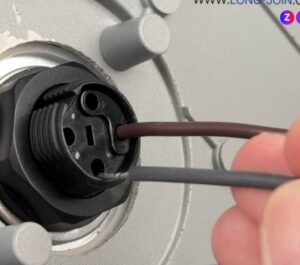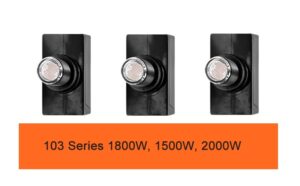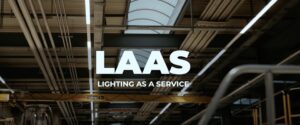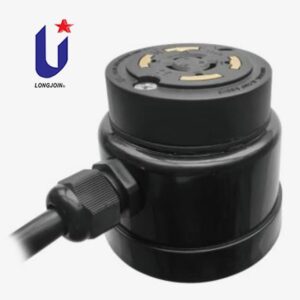Individual vs. Centralized Lighting Control: Which is Best for Your Urban Landscape?
Introduce
Urban lighting is more than just lighting up streets and buildings. It is vital for increasing safety and boosting economic activity. Overall, it aids in improving the quality of life in cities. Advancements in technology have made lighting control systems more efficient and adaptable. It has increased convenience and control. In this article, we will talk about the benefits and challenges of individual and centralized lighting controls. We will focus on how Long-Join’s products can be integrated into various urban planning projects to increase efficiency. They will enhance adaptability and control in the lighting systems of the city.
Individual Lighting Control
Individual lighting control refers to the system where each light can be controlled separately and functions independently which can also be programmed thus allowing for high variations and customizations.
Benefits of Individualized Lighting Control
1. Customizability
Personal control allows more control for different lighting schemes over different areas. This makes it easier to adjust different lighting levels for residential, commercial, or any specific area. It improves the capability and functionality in each zone.
2. Energy Efficiency
The energy efficiency allows lights to be adjusted automatically based on the time needed. They do it through sensors which can dim or turn off the lights during the daytime or even at night when no one’s around. This will significantly reduce energy consumption and increase efficiency.
3. Enhanced Safety
Adaptive lighting has made its way to enhancing safety through sensors that respond to any pedestrian or vehicular movement. They increase light illumination to increase visibility. Thus, it reduces blind spots and potential crime areas.
Challenges of Individualized Lighting Control
High Cost
Expensive equipment and complex installation processes cause the initial setup cost of individual lights very high.
Maintenance Issues
Each light is controlled individually which means maintenance and failures in one unit need to be addressed individually. It will increase both maintenance costs and effort.
Installation Complexity
Individual setting up of units requires extensive labor. It demands detailed planning and an extensive wiring system for communication.
Caption: Zhaga type Socket
Centralized Lighting Control - How It Works?
Centralized lighting control refers to managing the entire lighting system from one single control unit. This allows more unified control over a wide area through a central management system.
Benefits
- Easier Management: A centralized system makes it more easy and convenient to operate the whole city’s lighting system from a single controlled location. This simplifies its control and oversight
- Data Integration: A centralized system can easily integrate with other centralized management systems. It will provide useful data to increase energy efficiency and improve urban planning.
- Scalability: Expanding and upgrading a centralized system is more scalable and easy. This makes it a perfect choice for developing cities with extensive lighting networks.
Challenges
- Single Point of Failure: A major challenge of a centralized lighting system is the failure of the central control unit results in a power outage in the whole controlled area. It makes it a major problem until alternatives are sought or repairs are made.
- Complex Setup: Setting up a centralized system can be a difficult task. It requires careful planning and integration with the existing city infrastructure.
- High Initial Investment: Initial installments for centralized systems can be expensive. It requires high investments in technology and infrastructure setup
Comparison of Individual and Centralized Lighting Control
When comparing individual and centralized lighting controls, each system comes with its perks and challenges. Both can be suitable according to the area’s needs.
- Control Efficiency: Individual controls give more precision and can be adjusted according to specific needs. A centralized system provides a broader oversight and ease of management.
- Cost and Maintenance: Individual systems may have higher initial investment and maintenance costs, but it’s relatively more energy efficient. This will reduce operational costs over time. However, centralized systems may require less frequent maintenance but have a higher upfront cost.
- Adaptable and flexible: Individual systems are more flexible and adaptable to different areas and needs. Contrarily, centralized systems provide a more consistent approach. It is more advantageous for large-scale adjustments.
Comparison Table
Feature | Individual Lighting Control | Centralized Lighting Control |
Control | Each light is controlled separately | The entire system is managed from a single control unit |
Customizability | High–specific adjustments for different areas | Moderate – broad control over large areas |
Energy Efficiency | High–lights adjust automatically via sensors | Moderate – optimized for overall efficiency |
Safety Enhancement | High–adaptive lighting increases visibility | Moderate – general enhancement through centralized control |
Initial Cost | High – expensive equipment and installation | High – significant investment in technology and infrastructure |
Maintenance | Individual maintenance for each light can be costly and labor-intensive | Less frequent, centralized maintenance but critical if the system fails |
Installation Complexity | High – extensive labor and planning required | High–complex integration with existing infrastructure |
Scalability | Moderate – each light needs individual adjustments | High – easier to expand and upgrade over large networks |
Management Convenience | Moderate – requires oversight of multiple units | High – simplifies control and oversight from a single location |
Data Integration | Low – limited to individual unit data | High – easily integrates with other systems for urban planning |
Single Point of Failure Risk | Low – failure affects only individual units | High–central unit failure can affect the entire system |
Operational Costs Over Time | Lower – more energy-efficient in the long run | Moderate – initial savings on maintenance may be offset by energy costs |
Flexibility and Adaptability | High – adaptable to specific needs and areas | Moderate – consistent approach suitable for large-scale adjustments |
Environmental Impact | Positive – reduces light pollution and energy use | Positive – overall energy management reduces environmental footprint |
User Experience and Public Perception | High – tailored to local needs and preferences | Moderate – general satisfaction due to consistent lighting levels |
Final Words!
The debate between individual and centralized lighting control systems is nuanced and dependent on various factors. While individual control offers flexibility and customization at a granular level, centralized control provides efficiency and ease of management. It works best on a larger scale. The choice between these two ways should be made based on the specific needs, goals, and characteristics of the urban landscape in question.
External Link
https://www.sciencedirect.com/topics/engineering/photocell






